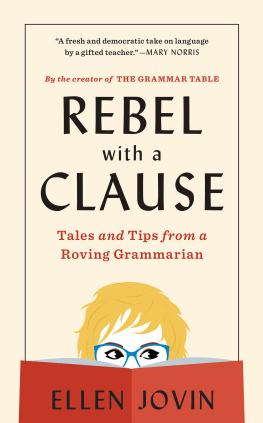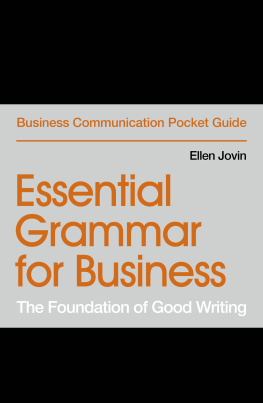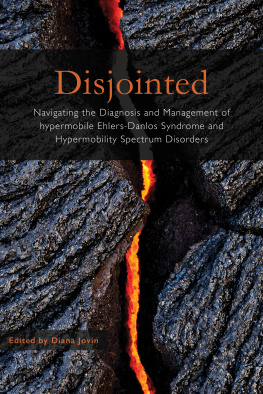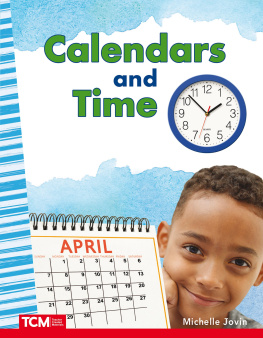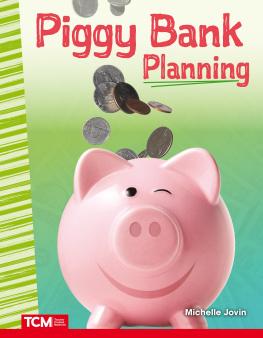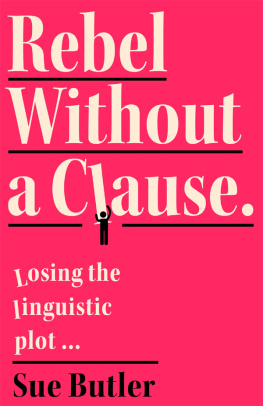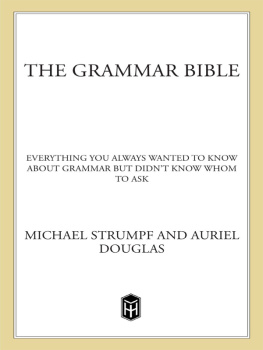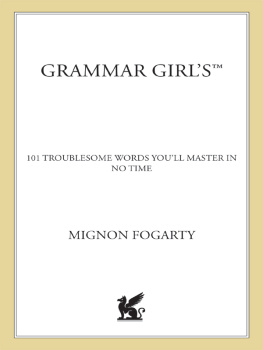REBEL WITH A CLAUSE . Text and illustrations copyright 2022 by Ellen Jovin. All rights reserved under International and Pan-American Copyright Conventions. By payment of the required fees, you have been granted the nonexclusive, nontransferable right to access and read the text of this e-book on-screen. No part of this text may be reproduced, transmitted, downloaded, decompiled, reverse-engineered, or stored in or introduced into any information storage and retrieval system, in any form or by any means, whether electronic or mechanical, now known or hereafter invented, without the express written permission of HarperCollins e-books.

Map by Chrissy Kurpeski
I n the late afternoon of September 21, 2018, I exited my New York apartment building carrying a folding table and a big sign reading GRAMMAR TABLE . I crossed Broadway to a little park called Verdi Square, found a spot at the northern entrance to the Seventy-Second Street subway station, propped up my sign, and prepared to answer grammar questions from passersby.
This might seem bizarre to some, but to me it felt like destiny. Ive been teaching writing and grammar for decades. I love grammar. Ive studied twenty-five languages for fun. My bookshelves are filled with grammar and usage books, carefully alphabetized by language from Albanian to Zulu. I majored in German in college and earned a masters degree in comparative literature, specializing in African American and German writers. One of the greatest pleasures of my life has been participating in a world of reading and literature and beautiful, varied words. I love exploring how they are put together, not just in English, which is the focus of this book, but in all the languages I have studied.
The Grammar Table idea originally came to me a couple of months before that inaugural fall afternoon. From the moment the whim first entered my head, I knew I had to make it happen. Waiting for the furnace days of summer to end, I took care of the practical details. I researched opaque city regulations before determining that dispensing free grammar advice qualified as free speech; I studied the folding table market and ordered my favorite and most grammar-friendly, a lightweight forty-eight by twenty inches; and I made a Grammar Table sign, adding to it what I thought were helpful discussion-inspiring suggestions, such as capitalization complaints, semicolonphobia, and comma crisis.
That September day, it took me approximately thirty seconds to start getting visitors. One of the first questions involved a spousal apostrophe dispute. A woman came up to me with her husband, two kids, and a complaint. Handing me her cell phone, she told me her husband had sent her a text message with a misplaced apostrophe. The evidence was right there on the screen: Another fun afternoon for the Bensons! I told her she was right: no apostrophe. The husband laughedhe had no painful grammar sensitivitiesand off went the apostrophe-free Bensons to enjoy their afternoon.
Some people just need someone to smile at them politely while theyre complaining, and then they go home happier. I like listening to people, and Im genuinely curious about them, which is why I included a Vent! option right on my Grammar Table sign. Ive heard a lot of complaintsabout apostrophes used for plurals, missing commas, extra commas, run-on sentences, spelling snafus, peripatetic participles, and more.
Sometimes my interventions soothe the insecurities of the questioner. A tiny Filipino womanmaybe five feet tall, about forty years oldapproached the table holding the hand of a tinier girl. She wanted to know how to pronounce finance. Did the word start out like fine and have the stress on the first syllable, or did it begin like fin and have the stress on the second? When she heard that her second-syllable stress was fine, even preferable in the opinion of one of the experts whose books lay on the Grammar Table, she started jumping up and down. This is neither hyperbole nor metaphor: she literally jumped up and down and made her smaller companions arm sail in sync with her excitement. Someone had been telling her she was wrong, and now she knew she wasnt, and she felt better!
That turns out to be a common experience for people who approach me: teachers or co-workers or others in their lives have made them feel bad about their use of language. But mine is not the Grammar Judgment Table, and I will listen to whatever is on peoples minds, even when they arrive with allegations rather than questions: Millennials are ruining the language, or No one knows how to write anymore because its all text-speak. I have heard quite a few speeches about how young people are destroying English, but young people, even children, ask some of the best questions of all, so I remain profoundly unconcerned.
I know how deep peoples relationship to grammar runs, because Ive been teaching adults of all socioeconomic and educational backgrounds for thirty years. Language is connected to peoples sense of self and their sense of power. There is a lot of grammar insecurity; people regularly wish they knew more about the building blocks of the words they use. Whoever the Grammar Table visitors are, I want them to feel good about the relationship they have with language today and, if they want to acquire new knowledge, hopeful about where they might end up.
In the beginning, I regularly sat out by the same Seventy-Second Street subway stop on Broadway. That station disgorges thousands of people every evening during rush hour. However, I was soon on the move to other locations around town. Language lovers are numerous and ubiquitous in New York. At Grand Central one day, I ended up surrounded by eight Metropolitan Transit Authority workers in uniformfive men and three women. At first I thought they were going to tell me I had to leave, but instead the encounter became an MTA grammar confessional.
One told me, I cant tell the difference between your and youre. Another complained, I dont know what to do with the semicolon. A third MTA employee, a woman, confessed, I cant pronounce ambulance right. I keep saying ambilance! Her co-workers agreed that yes, she did do that! Then a six-foot-seven employee jumped in. I can do just two things, he said. I can reach things and I can write. But you cant make money as a writer, so I work for the MTA instead!
Within six months, I was answering grammar questions across state lines. Thats because after the positive response to the Grammar Table in New York, my husband and I had the same thought: Road trip! And off we went. Brandt Johnson, my partner in life as well as in a communication skills training firmand a language lover himself who is constantly making pronoun antecedent jokes around the homehas now filmed hundreds of Grammar Table encounters in forty-seven states, footage that he is turning into a Grammar Table documentary. We were going for fifty, but the pandemic arrived in the US before we reached Hawaii, Alaska, and Connecticut.
Well, we did actually reach Connecticut, but Brandt and I were hungry and got pizza, which was delicious, so then we got more pizza, and then it got dark and cold, so we thought, We can come back anytime, but then COVID-19 came first and we couldnt. As I write this, however, plans for the missing three states are in the works.

